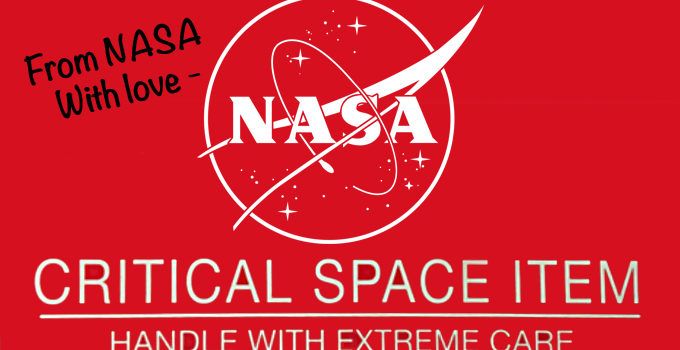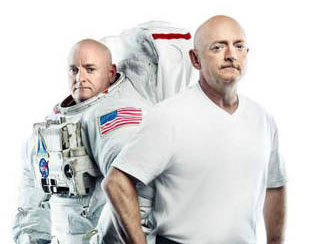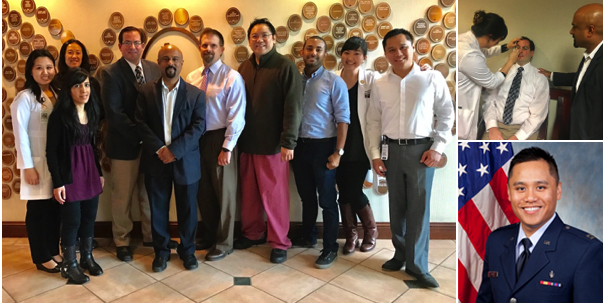

NASA & Neuroscientists Prepare to Visit Mars
by Marlon Saria
In spite of the opinions of certain narrow-minded people, who would shut up the human race upon this globe, as within some magic circle which it must never outstep, we shall one day travel to the moon, the planets, and the stars, with the same facility, rapidity, and certainty as we now make the voyage from Liverpool to New York!
– From the Earth to the Moon (1865) by Jules Verne
At the crossroads of brain science and rocket science
For those who are fascinated by the idea of human beings going beyond themselves and our atmosphere, the Apollo 11 landing on the moon in 1969 made science fiction into reality. Since those pioneering days, National Aeronautics and Space Administration (NASA) space programs have included many extraordinary projects that challenge our imaginations and widen our horizons.
More and more, astronauts will be spending longer stretches of time in space including multi-year missions to Mars, leaving behind on earth, not only their family and friends but also their natural environment.

To help ensure the health of space travellers, NASA’s Twins Study was the first of its kind to compare molecular profiles (“omics”) of identical twin astronauts. Capt. Scott Kelly was on the international space station for a year while his twin brother Mark stayed on Earth participating is parallel studies. Results of the Twins Study include research findings on how the human body adjusts to weightlessness, isolation, radiation and the stress of long-duration spaceflight.
NASA states, “One particular research project examines fluid shifts that occur when bodily fluids move into the upper body during weightlessness. These shifts may be associated with visual changes and a possible increase in intracranial pressure, which are significant challenges that must be understood before humans expand exploration beyond Earth’s orbit.”
Santosh Kesari, MD, PhD, and his team at Pacific Neuroscience Research Center, Pacific Neuroscience Institute (PNI) have been selected to collaborate with the National Space Biomedical Research Institute (NSBRI), tasked with identifying and managing the health risks associated with long-term manned missions to space. Working with Dr. Brandon Macias, scientist from NSBRI, a NASA-funded consortium of institutions, our team is developing a device that will prevent visual impairment and intracranial pressure (VIIP) syndrome in astronauts involved in long duration space flights on the International Space Station.
Marlon Saria, PhD, RN, director of quality outcomes and research at PNI is part of the team that received training on the measurement of study parameters including intraocular pressure. He says, “I am extremely excited about this project and receiving equipment from the NASA Johnson Space Center in Houston, Texas labelled “Critical Space Item” was quite thrilling! As an active Air Force reservist, I have had a life-long fascination with flying and space travel.” Dr. Saria, a Flight Commander for Nursing Services in the U.S. Air Force Reserves, adds, “With my military background, knowledge in advanced nursing care and experience in research, I can provide a unique perspective. Our work will be one of the factors that contributes to making longer space travel possible and safer.”

The current study conducted by Dr. Kesari’s department of translational neurosciences and neurotherapeutics at Saint John’s Cancer Institute explores a number of physiologic variables that may impact vision changes that have been reported in more than half of American astronauts after long duration space flights. A few of the studies being conducted by our team include determination of the following:
Vascular dimension measures by ultrasound
Jugular veins, cerebral and carotid arteries, vertebral arteries and veins, portal vein
Ocular measures
Optical coherence tomography, intraocular pressure, 2-dimensional ultrasound including optic nerve sheath diameter, globe flattening, and retina-choroid thickness, Doppler ultrasound of ophthalmic and retinal arteries, and veins
Intracranial pressure measures
Tympanic membrane displacement, and continuous monitoring using a disposable pressure transducer
The study is currently open and recruiting potential subjects willing to participate in this pioneering research. Eligibility includes patients using intraventricular catheters.
The eagle has landed at Pacific Neuroscience Institute!
For more information, please contact our team at neuro.oncology@jwci.org or 310-829-8265.

Marlon Garzo Saria, PhD, RN, is assistant professor and advanced practice registered nurse and director of the Center for Quality Outcomes and Research (CQOR) in the Department of Translational Neurosciences and Neurotherapeutics at the Saint John’s Cancer Institute.

Zara Jethani, MS, MBA, is the marketing director for the Pacific Neuroscience Institute. Her background is in graphic design, molecular genetics research and healthcare marketing.
About the Author

Marlon Saria
Marlon Garzo Saria, PhD, RN, AOCNS, FAAN, is an oncology clinical nurse specialist and nurse scientist for the Inpatient Oncology and Caritas concierge suites at Providence Saint John’s Health Center in Santa Monica, California. He is an Assistant Professor of Neurosciences and Neurotherapeutics and Director of the Center for Quality Outcomes and Research at Pacific Neuroscience Institute and Saint John’s Cancer Institute. Dr. Saria serves in the Nurse Corps of the U.S. Air Force Reserve as a flight commander in the Aerospace Medical Squadron. He was inducted as a Fellow of the American Academy of Nursing in 2014.
Last updated: February 9th, 2017